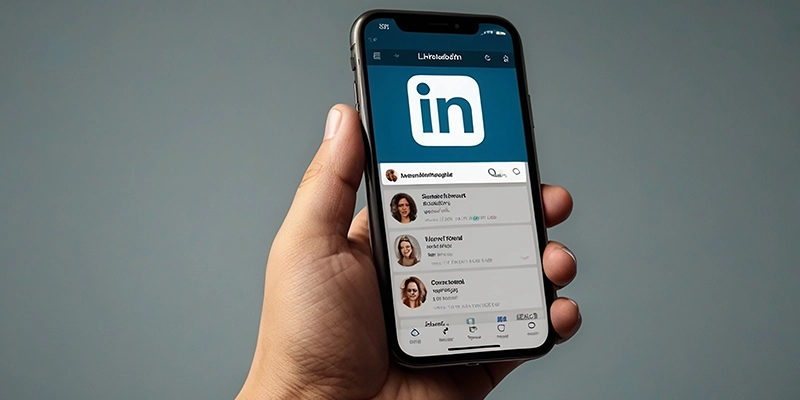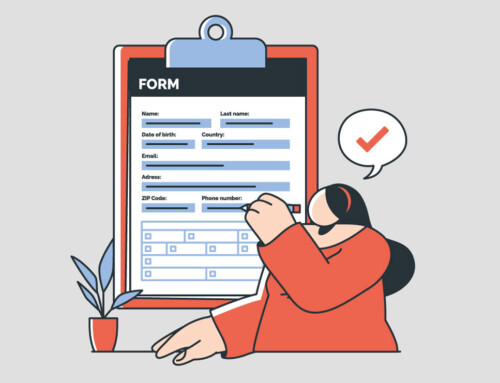Contents
LinkedIn for lawyers is a great tool in their practice area. It gives them the possibility of expanding their connections with other attorneys and also clients. This will also be helpful in terms of keeping their pace with modern changes. Moreover, through LinkedIn, lawyers can attract new clients and unlock countless opportunities. In fact, in a competitive field such as law, having good and expanded connections is a key asset to become successful.
Tip 1: Compelling Headline for LinkedIn for Lawyers
A. The Importance of a Strong Headline
Your headline is one of the most important elements of your LinkedIn for Lawyers profile. It’s the first thing people see, appearing directly below your name on your profile, in search results, and when you send connection requests. A well-crafted headline not only summarizes who you are but also helps you stand out in a crowded field. It plays a crucial role in your Lawyer LinkedIn Strategy by acting as a mini-advertisement for your legal expertise.
A generic headline like “Attorney at Law” or “Legal Professional” is a missed opportunity. Instead, your headline should convey your practice area, your specific strengths, and the value you provide. Since LinkedIn limits headlines to 220 characters, you need to be concise but impactful. A well-written headline tells prospective clients and colleagues exactly what you offer, making it easier for them to decide to connect with you.
B. Headline Optimization with Keywords
Using the right keywords in your headline is essential for ensuring your LinkedIn for Lawyers profile appears in search results. Keywords help potential clients and peers find you based on their search criteria. For example, a family law attorney might include keywords like “divorce attorney,” “child custody lawyer,” or “family mediation expert,” while a corporate lawyer might use terms like “M&A attorney” or “business contract specialist.”
By incorporating relevant keywords into your headline, you increase the chances of your profile being discovered by people searching for legal expertise in your practice area. This approach forms the foundation of a strong Lawyer LinkedIn Strategy.
C. Examples of Effective Headlines
Here are several examples of optimized headlines that can serve as inspiration for crafting your own:
- “Employment Lawyer Helping Small Businesses Navigate Labor Laws”
- “Real Estate Attorney Specializing in Commercial Leases and Transactions”
- “Family Law Attorney | Divorce Mediation & Child Custody Expert”
- “Corporate Attorney | M&A for Tech Startups & Growth Companies”
- “Intellectual Property Lawyer Protecting Innovators and Creators”
Each of these headlines is specific, target-focused, and provides a clear value proposition. By clearly stating your area of expertise, you make it easier for potential clients to identify whether you are the right attorney for their needs. Your headline is a powerful tool in your Lawyer LinkedIn Strategy and getting it right can significantly enhance your profile’s visibility and impact.
Tip 2: Use a Professional Photo
A. Guidelines for Selecting the Right Photo
A professional photo is one of the most critical visual elements of your LinkedIn for Lawyers profile. In the legal profession, where trust and credibility are paramount, your photo plays a key role in creating a positive first impression. Research has shown that profiles with photos receive significantly more views than those without. Therefore, a high-quality, professional photo is not just a good idea—it’s essential to a successful Lawyer LinkedIn Strategy.
When selecting a photo, ensure that it is clear, recent, and appropriate for your practice area. The image should reflect your professionalism, while still being approachable. A corporate attorney might choose a more formal look, such as a suit and tie, while a lawyer who represents startups might opt for business casual attire. Your expression should convey confidence and approachability, with a natural smile that helps build trust with those viewing your profile.
Additionally, the background should be clean and distraction-free to keep the focus on you. Avoid using casual selfies, photos from social events, or images with others cropped out. A professional setting or neutral background works best for LinkedIn for Lawyers.
B. The Impact of a Professional Photo on Engagement
The difference a professional photo can make on LinkedIn for Lawyers is significant. Profiles with professional photos are 14 times more likely to be viewed than those without one. Your photo is often the first thing that potential clients and colleagues will notice, and it influences their perception of your credibility and professionalism. Given the importance of trust in the legal field, having a polished and professional photo is key to building strong relationships through LinkedIn for Lawyers.
Your Lawyer LinkedIn Strategy should consider that first impressions matter. A high-quality photo, coupled with a well-crafted headline and summary, makes your profile stand out and invites more engagement. Profiles with well-rounded visual and textual elements are much more likely to attract attention and generate inquiries from potential clients.
Moreover, if you’re actively networking or generating leads via LinkedIn, integrating those contacts into RunSensible’s CRM can help you manage follow-ups and track client interactions efficiently. This allows you to capitalize on the engagement that a strong profile photo and optimized profile can generate.
Tip 3: Optimize Your Summary Section
A. Crafting an Engaging Summary
Your LinkedIn summary, also referred to as the “About” section, is where you tell your professional story. This section is crucial for creating an emotional connection with potential clients or colleagues, and it allows you to highlight your experience and expertise in a way that a simple resume cannot. Writing a compelling and client-focused summary is a key component of a successful Lawyer LinkedIn Strategy.
Begin your summary by introducing yourself and your primary area of legal expertise. Avoid generic language and instead, focus on what makes you unique. Consider writing in a conversational tone, as though you were speaking directly to your ideal client or colleague. Emphasize your experience, your specific practice areas, and the value you provide to clients. Rather than listing qualifications, explain the types of problems you solve for your clients and the results you achieve. This approach makes your profile more engaging and relatable.
For example, instead of writing “Experienced attorney with 10 years in corporate law,” consider something more engaging:
“As a corporate attorney with over a decade of experience, I help tech startups and small businesses navigate complex mergers and acquisitions. My focus is on providing practical, business-minded legal advice that supports my clients’ long-term growth. Whether drafting contracts or negotiating deals, my goal is to ensure that my clients are protected while maximizing opportunities.”
This personal and client-focused narrative helps potential clients connect with you on a more meaningful level, which is essential when using LinkedIn for Lawyers to grow your practice.
B. Using Keywords in Your Summary
Keyword optimization is essential for making sure your LinkedIn for Lawyers profile appears in search results. Incorporating relevant keywords into your summary improves your visibility on the platform and helps potential clients or colleagues find you. Think about the terms your target audience might use when searching for legal services. If you are a family lawyer, for instance, you might include terms like “divorce attorney,” “child custody lawyer,” or “mediation expert.” Similarly, a corporate lawyer might use terms like “M&A attorney,” “business law specialist,” or “contract negotiation.”
Including these keywords naturally in your summary helps LinkedIn’s algorithm match your profile with relevant searches, making your profile easier to find for those seeking your expertise. This is a key element of any Lawyer LinkedIn Strategy.
C. Example of an Optimized Summary
Here’s an example of how you might optimize your summary to improve your LinkedIn for Lawyers strategy:
“As a dedicated family law attorney, I have over 15 years of experience helping clients navigate sensitive issues such as divorce, child custody, and family mediation. My approach is compassionate yet strategic, ensuring that my clients receive the legal guidance they need to achieve the best possible outcome. Whether it’s negotiating settlements or advocating in court, my goal is to protect my clients’ interests while minimizing stress during difficult times. I specialize in high-conflict custody cases, divorce mediation, and child support disputes.”
This summary not only tells your story but also incorporates important keywords like “divorce attorney,” “child custody lawyer,” and “mediation expert,” which helps enhance the searchability of your LinkedIn for Lawyers profile.
Tip 4: Showcase Your Experience and Achievements
A. Detailing Your Work History
The experience section of your LinkedIn for Lawyers profile is an opportunity to showcase your professional journey. However, it’s not enough to simply list past job titles and responsibilities. To make the most of this section, focus on the value you’ve delivered in each role and the results you’ve achieved for your clients. A well-detailed experience section is a key component of a successful Lawyer LinkedIn Strategy.
When describing your past roles, emphasize accomplishments over duties. For example, instead of writing, “Handled real estate transactions,” say, “Managed over 50 complex commercial real estate transactions, consistently delivering results within tight deadlines while protecting client interests.” This description not only showcases your expertise but also provides a clear picture of your impact as a lawyer.
Additionally, highlighting specific industries or sectors you’ve worked in can help differentiate you from other attorneys on LinkedIn for Lawyers. If you specialize in healthcare law, intellectual property, or international business law, make sure to highlight that experience in your profile. Specialized expertise can attract clients in those industries and enhance your professional standing.
B. Quantifying Your Achievements
Quantifying your achievements wherever possible can further elevate your LinkedIn for Lawyers profile. Concrete numbers provide a clearer picture of your impact and demonstrate your effectiveness as a legal professional. For instance, you could say, “Negotiated settlements totaling over $10 million for personal injury clients,” or “Drafted contracts worth over $100 million in corporate acquisitions.” These metrics help build trust with potential clients and make your profile more compelling.
Including these details is a crucial part of your Lawyer LinkedIn Strategy. Potential clients and colleagues are more likely to reach out when they can see tangible evidence of your success. Quantifying your achievements makes your profile stand out from those that provide only vague descriptions of responsibilities.
<<photo>>
Tip 5: Gather Endorsements and Recommendations
A. The Power of Social Proof
Social proof, in the form of endorsements and recommendations, is a vital component of your LinkedIn for Lawyers profile. Endorsements and recommendations build credibility and trust—two critical factors in the legal profession. They provide third-party validation of your expertise, work ethic, and results, which can help potential clients feel more confident in reaching out to you. Incorporating social proof into your profile is a key element of a strong Lawyer LinkedIn Strategy.
Endorsements allow your connections to vouch for specific skills, such as “litigation,” “contract negotiation,” or “family law.” The more endorsements you receive for a particular skill, the stronger the perception that you excel in that area. Recommendations, on the other hand, provide more in-depth testimonials about your character, skills, and the outcomes you’ve achieved for clients. Both endorsements and recommendations help enhance your profile’s appeal and increase trust among potential clients on LinkedIn for Lawyers.
B. How to Request Endorsements and Recommendations
Actively requesting endorsements and recommendations is essential to building a robust LinkedIn for Lawyers profile. When asking for endorsements, tailor your request to the individual by reminding them of a specific case or project where you worked together. Similarly, when requesting recommendations, personalize your message and ask for a testimonial that highlights your legal skills and the outcomes you achieved.
For example, you might reach out to a former client and say, “I’m updating my LinkedIn profile and would really appreciate it if you could write a recommendation highlighting the work we did together on your family law case. Specifically, it would be great if you could mention how our mediation sessions helped achieve a fair settlement.”
When you receive endorsements and recommendations, your profile becomes more attractive to potential clients and referral sources. This social proof adds another layer of credibility, helping you stand out from the competition on LinkedIn for Lawyers.
C. Building a Well-Rounded Profile with Diverse Recommendations
To create a well-rounded LinkedIn for Lawyers profile, aim for a diverse range of endorsements and recommendations that cover various aspects of your practice. Ideally, you want endorsements for key skills and recommendations from different sources, including clients, colleagues, and supervisors. This diversity provides a comprehensive view of your abilities and enhances your profile’s appeal.
A balanced profile with endorsements and recommendations can be the difference between a potential client choosing to contact you or moving on to another lawyer. By cultivating social proof on LinkedIn for Lawyers, you increase your chances of landing new clients and building stronger professional relationships.
Tip 6: Engage with the LinkedIn Community
A. Sharing Valuable Content
A successful Lawyer LinkedIn Strategy goes beyond simply creating a profile. To truly leverage LinkedIn for Lawyers, you need to be an active participant in the LinkedIn community. One of the best ways to do this is by sharing valuable content that demonstrates your expertise and provides value to your network. Posting articles, legal updates, case studies, or insights into legal trends can position you as a thought leader in your field and attract the attention of potential clients and colleagues.
Consistency is key when sharing content on LinkedIn for Lawyers. Regularly posting relevant and insightful content helps keep you top-of-mind with your network and strengthens your professional brand. For example, if you specialize in employment law, you might share updates on new labor laws or recent court rulings that impact your clients’ industries. Alternatively, a family lawyer could share insights on evolving custody laws or mediation techniques. By providing valuable information, you build a reputation as a knowledgeable and engaged professional.
B. Networking Strategically
Networking is a cornerstone of any Lawyer LinkedIn Strategy. While sharing content is essential, actively engaging with other LinkedIn users through comments, discussions, and group participation is equally important. Engaging with your connections’ posts by offering insightful comments or sharing your own perspectives helps expand your visibility and influence within the LinkedIn community.
Joining LinkedIn groups relevant to your practice area is another powerful networking tool. Groups allow you to participate in discussions with peers, share your insights, and connect with other professionals who share your interests. This kind of strategic engagement increases your chances of forming valuable professional relationships that can lead to referrals or collaborations.
C. Building Long-Term Professional Relationships
LinkedIn for Lawyers is not just about making one-time connections—it’s about fostering long-term professional relationships. Once you’ve connected with someone, maintain the relationship by regularly engaging with their content, sending personalized messages, and sharing information that might be of interest to them. Consistent engagement strengthens relationships over time and increases the likelihood of client referrals or collaborative opportunities.
Building and maintaining strong professional relationships is a crucial aspect of any Lawyer LinkedIn Strategy. By nurturing your network, you ensure that you remain top-of-mind when your connections need legal assistance or know someone who does.
Leveraging LinkedIn with RunSensible
A. Integrating LinkedIn Leads into RunSensible’s CRM
Managing your LinkedIn for Lawyers leads efficiently is critical to growing your practice. RunSensible’s CRM offers seamless integration with LinkedIn, allowing you to import and manage your leads in one centralized platform. By syncing LinkedIn contacts with RunSensible, you can track every interaction, schedule follow-ups, and categorize leads according to your practice areas.
This CRM integration streamlines your workflow, helping you organize and prioritize your LinkedIn connections more effectively. With RunSensible, you can ensure that no opportunity is missed, whether it’s a new client inquiry or a valuable referral source.
B. Enhancing Client Relationships with RunSensible
Once you’ve connected with a potential client on LinkedIn, maintaining regular communication is key to building a strong relationship. RunSensible’s CRM allows you to log every LinkedIn interaction, phone call, or email exchange in one place. This ensures that you stay on top of client follow-ups, track their needs, and offer personalized legal services. You can also set reminders for future communication or case updates, ensuring that clients feel supported and engaged throughout their legal journey.
By integrating LinkedIn for Lawyers with RunSensible’s CRM, you can enhance your client relationship management and improve overall client satisfaction.
Final Thoughts on LinkedIn and RunSensible
LinkedIn for Lawyers is an essential tool for legal professionals looking to grow their practice, expand their network, and enhance their visibility. By optimizing your profile, engaging with your network, and sharing valuable content, you can position yourself as a thought leader in your field. Moreover, integrating LinkedIn with tools like RunSensible’s CRM allows you to manage your leads and client relationships more efficiently, ensuring that no opportunity is overlooked.
In the digital age, LinkedIn for Lawyers is not just a platform for visibility—it’s a key component of your overall business strategy. By developing a comprehensive Lawyer LinkedIn Strategy, you can build stronger professional relationships, attract new clients, and ultimately grow your legal practice.
Learn about 7 Best Client Intake Software for Law Firms.
Building a Stronger Legal Network with LinkedIn
An optimized LinkedIn profile is more than just a digital business card—it’s a powerful tool for lawyers to connect with clients, peers, and opportunities. By crafting a compelling headline, using a professional photo, and engaging with your network through valuable content, you create a profile that stands out and fosters meaningful connections. Showcasing your experience, gathering endorsements, and actively participating in discussions all contribute to establishing trust and credibility, both crucial for building a strong professional presence online.
Engaging strategically on LinkedIn and integrating these efforts with tools like RunSensible’s CRM can take your networking to the next level. By organizing your leads and nurturing client relationships, you ensure that every opportunity is maximized. For legal professionals, LinkedIn is not just a platform for visibility but a critical part of growing your practice in a connected world.
Ready to take your legal networking to the next level? Start by optimizing your LinkedIn profile and let RunSensible help you manage leads and strengthen client relationships seamlessly. Explore how RunSensible’s legal practice management software can enhance your efforts today!
FAQs:
- Why is LinkedIn important for lawyers?
LinkedIn helps lawyers build a professional network, attract potential clients, and showcase expertise. It provides a platform to connect with peers, stay updated on legal trends, and enhance credibility through endorsements and recommendations. - How can I optimize my LinkedIn profile to attract clients?
To attract clients, craft a compelling headline, use a professional photo, and write an engaging summary. Highlight your legal expertise, showcase your achievements, and use keywords to improve searchability. Regularly sharing valuable content and engaging with your network can also boost visibility. - How does RunSensible help manage LinkedIn leads?
RunSensible’s CRM integrates with LinkedIn, allowing you to seamlessly import and organize leads. You can track interactions, set follow-up reminders, and maintain personalized communication with clients, helping to streamline your legal practice and grow your network efficiently.
Disclaimer: The content provided on this blog is for informational purposes only and does not constitute legal, financial, or professional advice.








